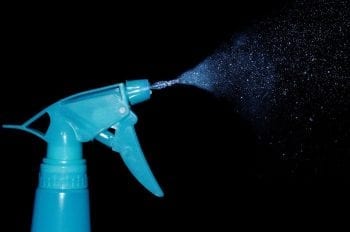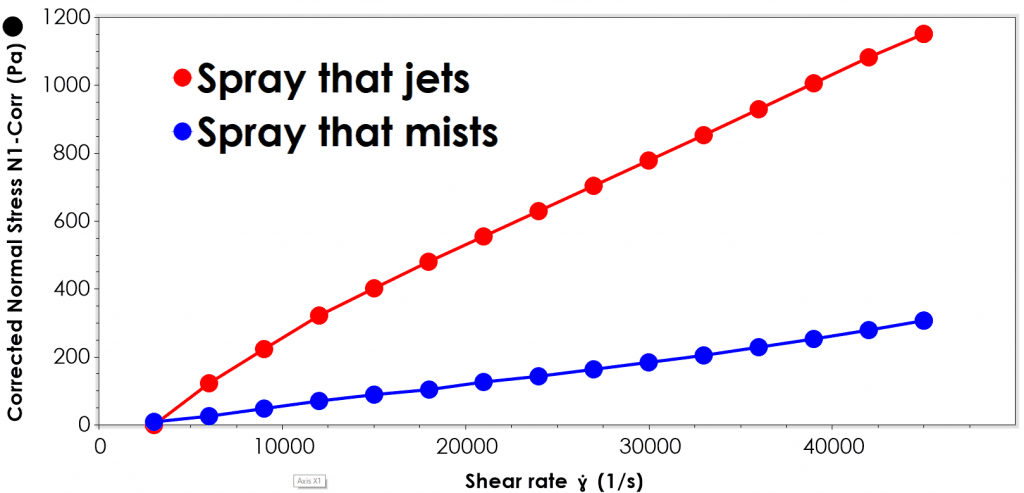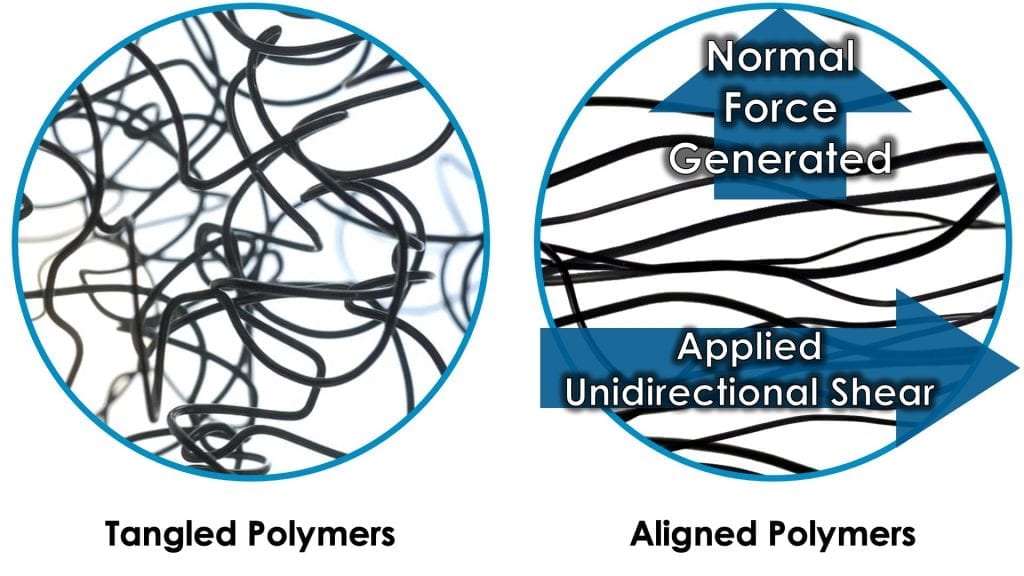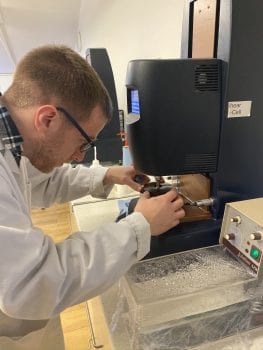 A huge range of every day products get sprayed out of their packaging. From hair spray to sanitising surface cleaners, spray on products are a simple and efficient method for a consumer to apply a product over a large surface area quickly and evenly, be it a mist onto the skin or paint on to a wall. For a product to be sprayable, it must keep a low viscosity at a high shear rate, but also atomise well. Polymer based products are often surprisingly tricky to spray due to their extensional properties. In this case these tend to ‘jet’ rather than ‘spray’.
A huge range of every day products get sprayed out of their packaging. From hair spray to sanitising surface cleaners, spray on products are a simple and efficient method for a consumer to apply a product over a large surface area quickly and evenly, be it a mist onto the skin or paint on to a wall. For a product to be sprayable, it must keep a low viscosity at a high shear rate, but also atomise well. Polymer based products are often surprisingly tricky to spray due to their extensional properties. In this case these tend to ‘jet’ rather than ‘spray’.
Getting a ‘jet’ instead of a ‘spray’? Contact us to discuss how we can help
 Normal stress generation is often a good correlate for predicting this extensional behaviour; Normal stress is a force that develops normal to the direction in which a viscoelastic material is being sheared. High performance rotational rheometers can detect normal stress as an axial force produced while the rheometer applies a defined shear rate to a sample. This allows us to examine a sample across a range of shear rates relevant to your sample in your system. The defined shear conditions and accurate measurements allows for precise and relevant normal stress measurements, which can be vital to identifying problems in spraying and atomisation of polymer-based formulations.
Normal stress generation is often a good correlate for predicting this extensional behaviour; Normal stress is a force that develops normal to the direction in which a viscoelastic material is being sheared. High performance rotational rheometers can detect normal stress as an axial force produced while the rheometer applies a defined shear rate to a sample. This allows us to examine a sample across a range of shear rates relevant to your sample in your system. The defined shear conditions and accurate measurements allows for precise and relevant normal stress measurements, which can be vital to identifying problems in spraying and atomisation of polymer-based formulations.
Polymers are a Pivotal Part of Modern Formulation
Polymers are long hydrocarbon chains that tangle up amongst themselves and other polymers. When added to a formulation, polymers can provide a huge range of potential benefits; Polymers can impart stability (UV, heat or chemical), colouring, lubrication, anti-sedimentation and can even be active ingredients (e.g. anti-fungal agents, or pharmaceutical active ingredients). The wide range of properties afforded by polymers have made them an invaluable addition to the modern formulator’s toolkit. The addition of polymers to a formulation does not always come entirely devoid of downsides, however.

As a result of the stringy, tangled nature of polymers, they tend to impart a viscoelastic property into formulations. This viscoelasticity can be a desirable property, particularly due to the lubricating property it imparts into a solution. It can create issues however when trying to spray a product, such as a paint or a deodorant, and can present a particularly difficult challenge when attempting to spray a product you also want to be lubricating, such as a mouth spray.
What is Normal Stress?
The difficulty in spraying high normal stress polymer formulations comes as a result of the tangled conformation polymers create. When subjected to shear force, the polymers are forced to straighten out from their natural tangled state.

As the formulation is sheared and polymers are forced to straighten, this creates a measurable force ‘normal’ (i.e. perpendicular) to the direction of shear. This normal force or normal stress can cause spray triggers to be stiff or difficult to press/squeeze, nozzles to clog, and even entirely prevent atomisation. Measuring and understanding normal stress can help to understand how changes in formulation utilizing different polymers or polymer concentration can affect your spray application.

Improving Spray with Normal Stress – An Underutilised Approach
Typically when attempting to improve spray and atomisation, surface tension, viscosity and density are the go-to problem finding measurements. When reformulating, for example switching an ingredient such as a polymer for an eco-friendly alternative or experimenting with the optimal polymer concentration in a material, these are often the measurements checked to ensure a product will work within a given spray system. It is not uncommon however for a formulator to attempt to match these factors, only to be confused and disappointed when a reformulation no longer works in their system. Normal stress is a crucial yet under-utilised measurement that can help to explain problems in spraying and atomisation.
Polymers are a versatile and invaluable tool to the modern formulator, but can also be an unexpected cause of problems, particularly when looking at spray applications. Normal stress is a common cause of problems with spray applications and atomisation during spraying. Accurate measurement of normal stress can illuminate a key factor in polymer-based solutions which can cause issues with atomisation and spray which can often be overlooked by formulators.
Need some help with rheology? Feel welcome to contact us
